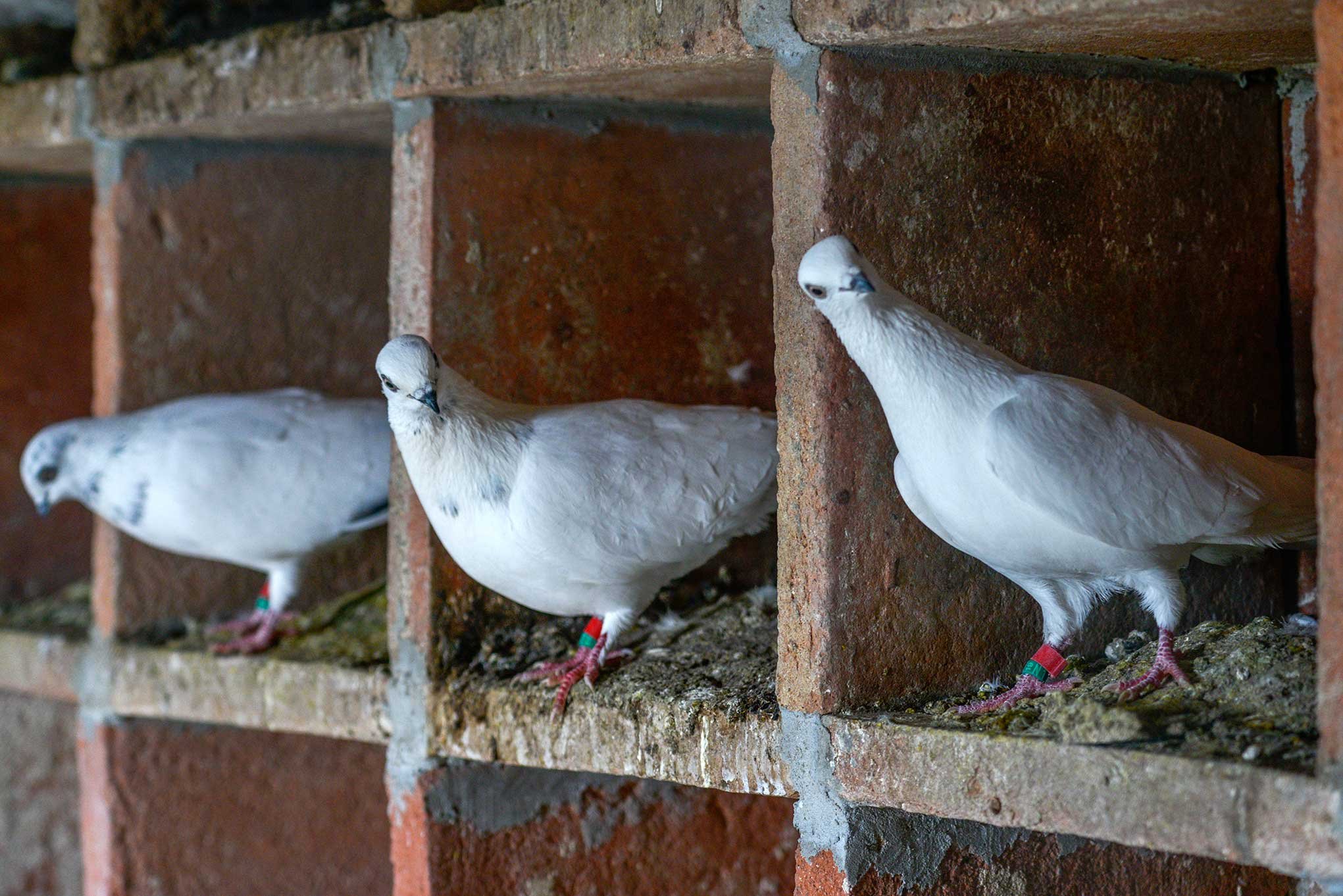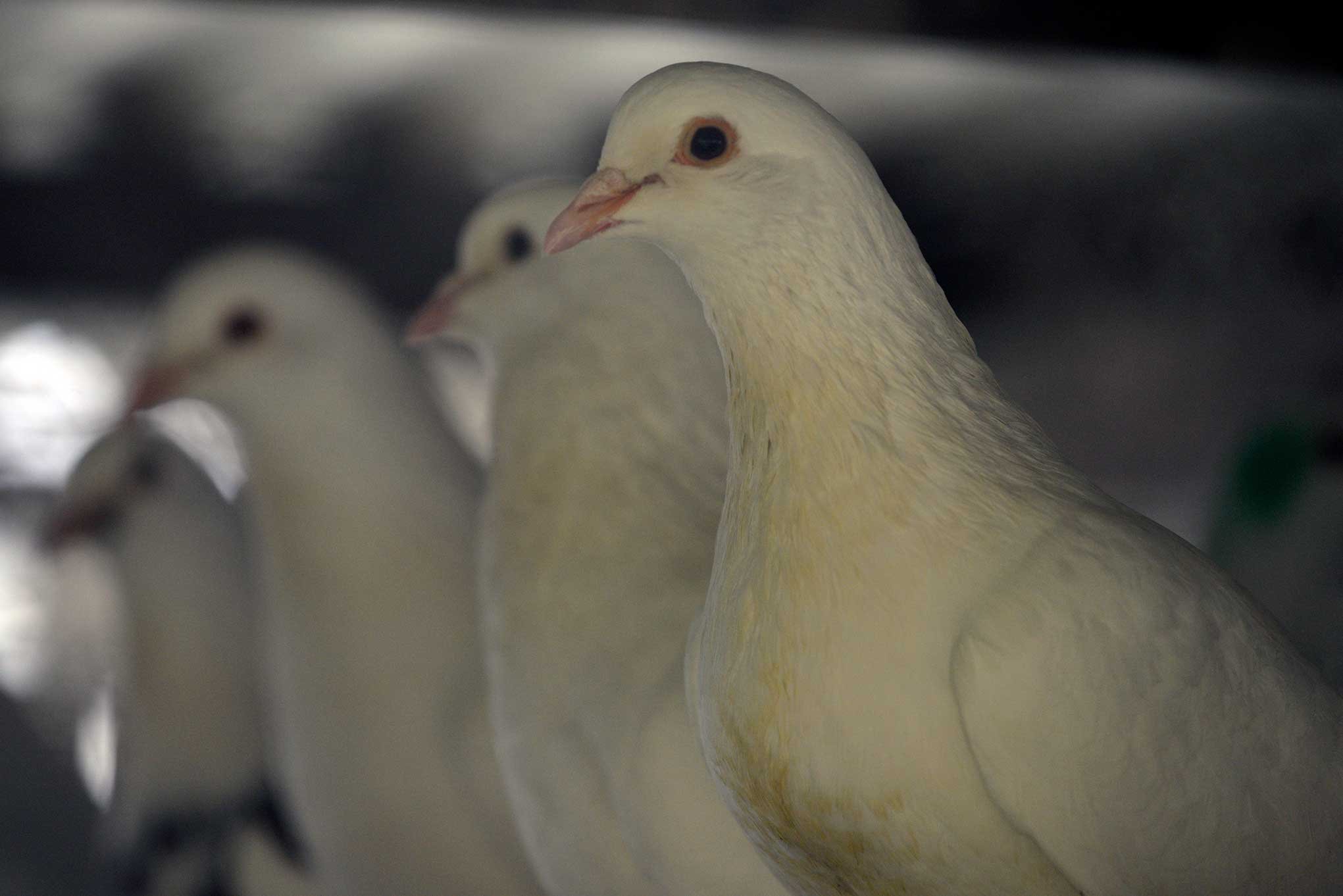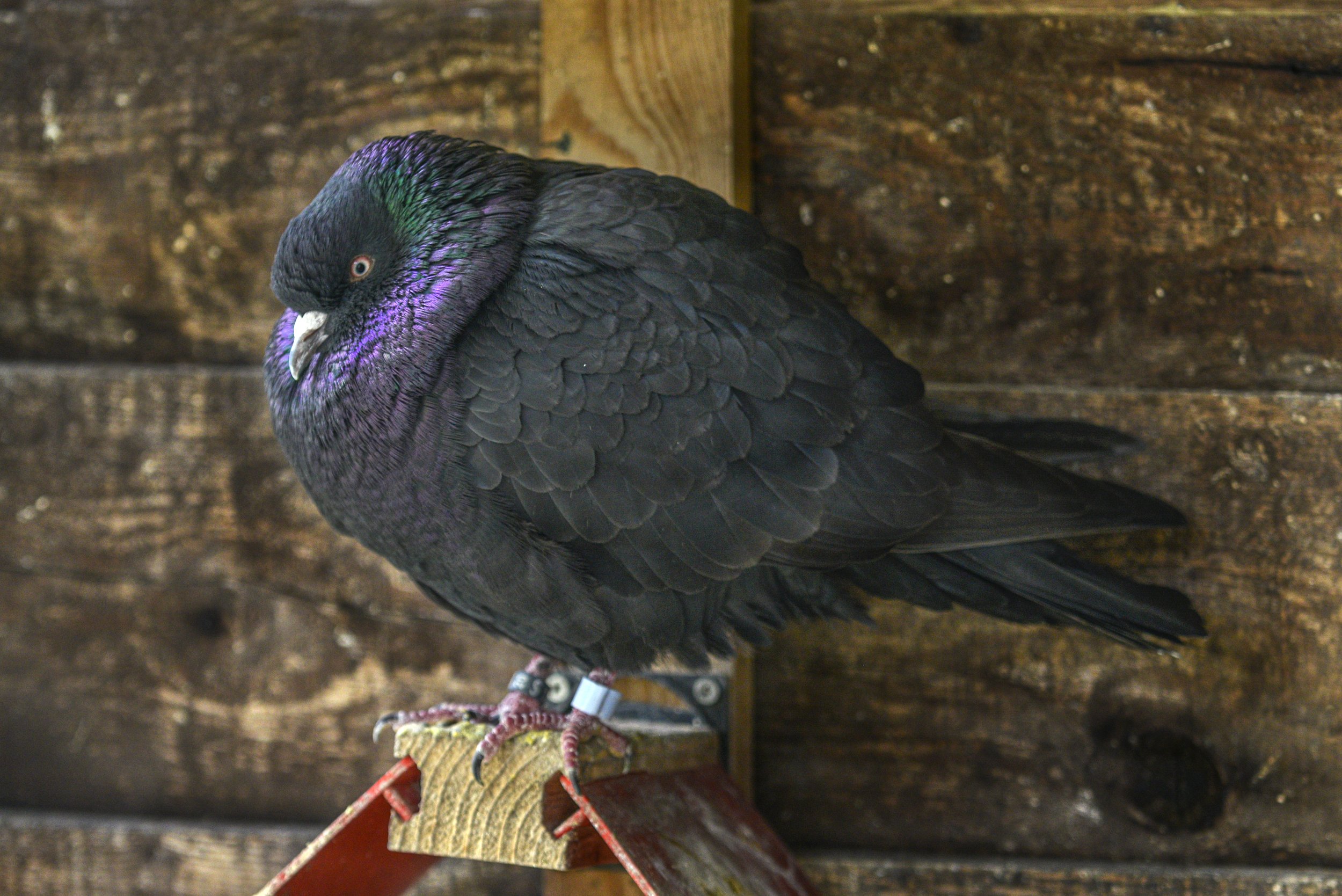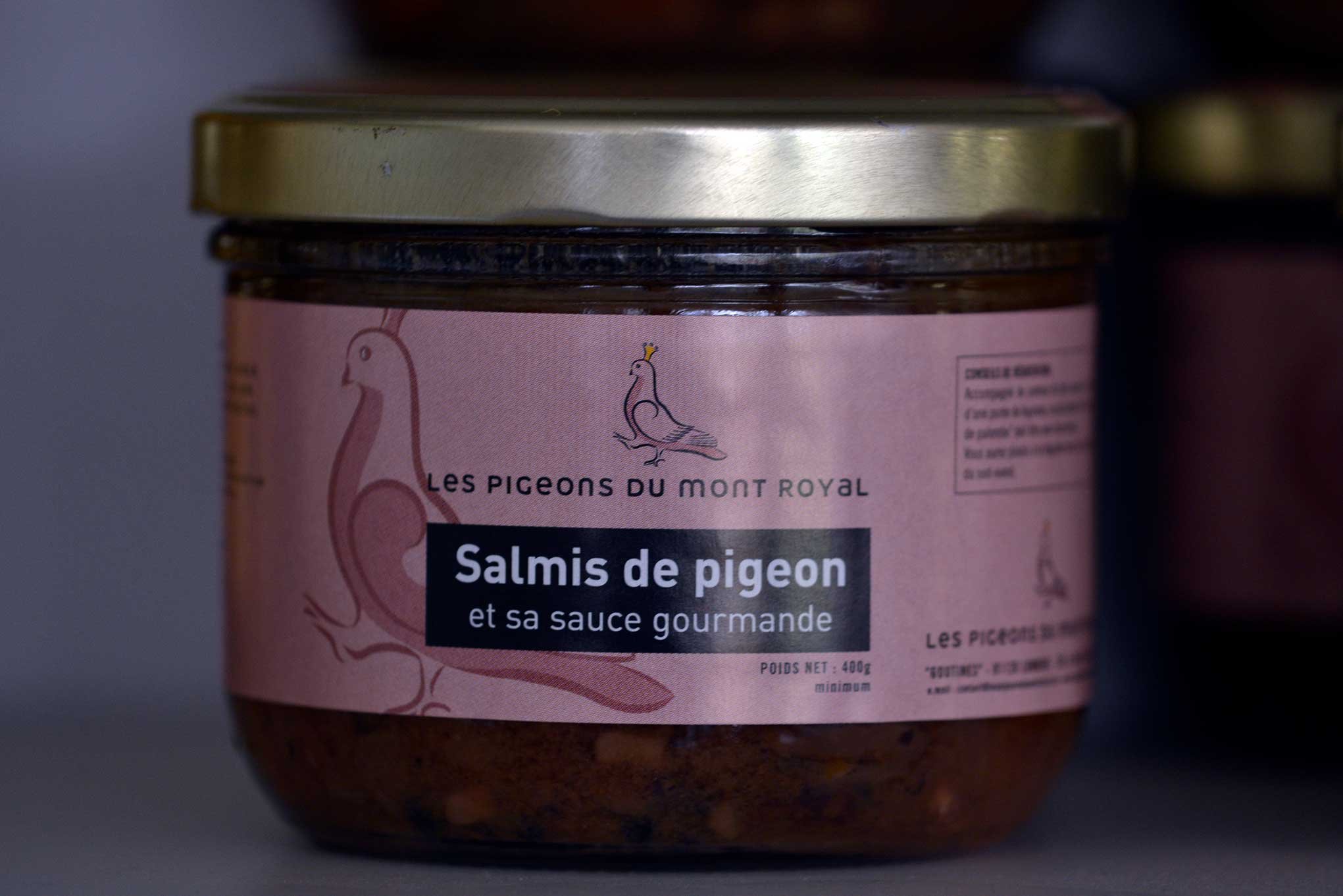MONTROYAL
PIGEON FOR THE TABLE / PIGEON FANCIER
Lionel and Nathalie Monneret
Lombers
More photos to come!
Today, pigeon is a speciality which you are most likely to find on the menu of a gourmet restaurant. With 600 producers breeding from 800,000 pairs of birds, France is the largest producer of squabs in Europe. One of the best-known pigeon farms in Occitanie is Les Pigeons de Mont Royal, 20 minutes south of Albi. The owners, Lionel and Nathalie Monneret, recount how they became leading players in this unusual business.
Lionel, the pigeon-fancier
When I was a child, there was an old man in our neighbourhood who bred racing pigeons. I was fascinated by their behaviour. If you take the time to observe them, they have such complex characters, they are much more than a bird. By the age of ten I was keeping a few pigeons of my own, and before long I was entering them in pigeon beauty pageants. As an adult, I began my career teaching in an agricultural college, but I knew it wasn’t what I wanted. One day, I saw an advert for a job with a commercial pigeon breeder who was hoping to develop the tourist side of his business. I applied and was taken on as a partner in 2001. Since 2016, the business has belonged to Nathalie and I, and we run it with five employees.
We see ourselves as much more than simple producers of meat. Our farm is on a pigeonnier circuit around Lombers which was created by our neighbour Michel Lucien, and we help to introduce our visitors to the history of pigeons. We show them our own pigeonnier which we built as a sort of museum and we explain how they worked. Their design was not a matter of chance – it was refined over time to be perfectly adapted for the pigeon, but managed in the interests of humans.
When pigeonniers were abandoned a century ago, countryfolk did not stop eating them entirely. Most farms around here still kept a few pigeons in small aviaries. A lot of our older visitors remember them from their childhood, and visiting Mont Royal is a moment of nostalgia for them. If they bring their grandchildren, the youngsters often ask me how I can keep certain pigeons for beauty pageants or racing, and breed others to be killed for meat. I know it’s a contradiction, but somehow in my mind I manage to separate the squabs I raise to earn my living from the pigeons which I buy or breed because they are beautiful or can fly high or fast. For meat production, we have 4,200 pairs of birds kept in eight large aviary buildings. My role as a breeder is to look after their welfare, feed them well and maintain or improve their genetics. Those three factors contribute to the quality of the meat, as does minimising stress when the birds are slaughtered.
Nathalie, the butcher and cook
When I first met Lionel, we used to go to pigeon beauty pageants together. In time, I learned to like pigeons, but I don’t love them like he does. I don’t spend hours observing them. Instead, I’m in charge of our abattoir and restaurant. Every week, Lionel and one of our employees select 1,200 squabs. They can estimate a bird’s age by eye and they take them away at 30 days.
Our abattoir is on site, and it operates on Mondays and Tuesdays. Within 24 hours of slaughter, the squabs are shipped to customers. Over 95% of our business is with top-end restaurants in Occitanie, northern Spain and along the Côte d’Azur. Eating pigeon is a lost habit, and those who remember it from their childhood usually think of a traditional casserole called pigeon and peas. Most of them would have eaten squabs raised by their own family because there were no professional pigeon meat breeders in France before the 1980s.
Today, upmarket chefs usually separate the fillet from the thighs and cook them separately. That gives the best results. At home, most people find it simpler to roast it whole like a chicken. When I prepare squabs in our restaurant, I try to offer visitors something more unusual such as pigeon in soy sauce or a Moroccan pigeon pastilla. And I use minced pigeon meat to make sausages and burgers for the children. I avoid serving the bird whole because some modern consumers don’t like seeing a little animal on their plate.
The breeding adults stay with us for four or five years. When the females stop laying, both birds in a couple are killed. Their meat is older, so cooking takes longer, and I use it to make things like jars of confit – squabs are too soft to do that.























